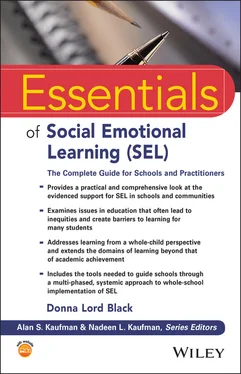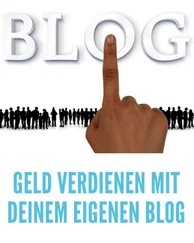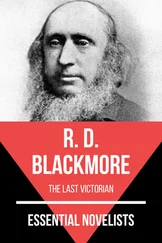Donna Lord Black - Essentials of Social Emotional Learning (SEL)
Здесь есть возможность читать онлайн «Donna Lord Black - Essentials of Social Emotional Learning (SEL)» — ознакомительный отрывок электронной книги совершенно бесплатно, а после прочтения отрывка купить полную версию. В некоторых случаях можно слушать аудио, скачать через торрент в формате fb2 и присутствует краткое содержание. Жанр: unrecognised, на английском языке. Описание произведения, (предисловие) а так же отзывы посетителей доступны на портале библиотеки ЛибКат.
- Название:Essentials of Social Emotional Learning (SEL)
- Автор:
- Жанр:
- Год:неизвестен
- ISBN:нет данных
- Рейтинг книги:5 / 5. Голосов: 1
-
Избранное:Добавить в избранное
- Отзывы:
-
Ваша оценка:
- 100
- 1
- 2
- 3
- 4
- 5
Essentials of Social Emotional Learning (SEL): краткое содержание, описание и аннотация
Предлагаем к чтению аннотацию, описание, краткое содержание или предисловие (зависит от того, что написал сам автор книги «Essentials of Social Emotional Learning (SEL)»). Если вы не нашли необходимую информацию о книге — напишите в комментариях, мы постараемся отыскать её.
Essentials of Social Emotional Learning (SEL): The Complete Guide for Schools and Practitioners
Essentials of Social Emotional Learning (SEL)
Essentials of Emotional Learning (SEL
Essentials of Social Emotional Learning (SEL) — читать онлайн ознакомительный отрывок
Ниже представлен текст книги, разбитый по страницам. Система сохранения места последней прочитанной страницы, позволяет с удобством читать онлайн бесплатно книгу «Essentials of Social Emotional Learning (SEL)», без необходимости каждый раз заново искать на чём Вы остановились. Поставьте закладку, и сможете в любой момент перейти на страницу, на которой закончили чтение.
Интервал:
Закладка:
Source : Black, D. (2020, May 7). Social and emotional learning: Why we must act now . Western Psychological Services. https://www.wpspublish.com/social‐and‐emotional‐learning‐why‐we‐must‐act‐now. Reprinted with permission from Western Psychological Services, www.wpspublish.com.
Throughout history, educational institutions have generally been regarded as sanctuaries for learning, and reports of school‐related violence were almost unheard‐of until the latter part of the twentieth century. Then, in the late 1990s and early 2000s, public perceptions of an alarming rise in school violence and bullying led to a growing concern that schools were no longer safe environments for students. The sociopolitical climate of those times was increasingly punitive, largely due to people’s fear, so what ensued was an era of exclusionary discipline practices. These included the adoption of zero‐tolerance discipline policies and the hiring of police officers in schools. These policies and practices led to a national trend in which schools began outsourcing discipline to the juvenile and criminal justice systems. Essentially, children of all ages were being punished through the legal system for committing minor infractions. Behavior that for many child development experts would be considered typical developmental behavior was being criminalized, and children were being funneled out of the public schools and into the courts system. The more frequent contact between schools and the justice system gave rise to a disproportionate number of students, often from disadvantaged backgrounds, being incarcerated.
These exclusionary discipline practices have now been directly linked to adverse and disturbing outcomes for certain subgroups of students (e.g., students of color and students with disabilities), and have become known as the school‐to‐prison pipeline (for more information, see Rapid Reference 2.3). A briefing report published by the U.S. Commission on Civil Rights (2019) stated that the use of exclusionary school discipline policies “for all levels of student infractions, regardless of severity, is often ineffective; and these practices may even increase the likelihood of future criminality and lower overall student academic performance in schools” (p. 5). In addition, a report issued by Texas Appleseed suggests there may have been no clear basis for the zero‐tolerance policies. As stated in the report, “The lack of reliable, accurate data measuring school crime makes it clear that the public policy changes that led to ‘zero tolerance’ and law enforcement in schools were not rooted in clear knowledge surrounding need, but instead were driven by fears stoked by media coverage of juvenile crime and ‘out of control’ youth” (Texas Appleseed, 2010, p. 195).
While some schools continue to employ these exclusionary discipline practices, many are turning to alternative solutions to re‐engage students, such as improving school climate and culture and implementing SEL strategies. In the wake of numerous and horrific school shootings, schools have begun to recognize the need for such approaches to address the rising worries over school safety from parents, educators, community members, policy makers, and particularly students. According to the Youth Risk Behavior Surveillance (YRBS) conducted by the Centers for Disease Control and Prevention (CDC), 8.7% of students in grades 9 through 12 did not feel safe at school during the 2019 school year. In addition, 2.8% of these students carried a weapon on school property during the 30 days prior to the survey, and 7.4% were threatened or injured with a weapon on school property during the 12 months preceding the survey. Furthermore, analysis of data trends showed increases in the percentage of students threatened or injured with a weapon on school property and in the percentage of students who did not go to school because they did not feel safe. All other behaviors contributing to violence did not change from what was previously reported during the 2017 school year (CDC, 2020).
Rapid Reference 2.3 The School‐to‐Prison Pipeline
What It Is
The school‐to‐prison pipeline is an outcome of schools’ overreliance on the juvenile and criminal courts systems to handle minor, discretionary discipline infractions. The adoption of exclusionary discipline practices, such as zero‐tolerance policies, have disproportionately impacted minority students and students with disabilities, resulting in them being funneled into the juvenile and criminal justice systems.
When It Began
The school‐to‐prison pipeline emerged as a result of zero‐tolerance discipline policies being adopted by schools, along with an increased reliance on school police officers for handling minor discipline infractions, such as dress code violations, being late to school or class, or use of inappropriate language, among others. These practices resulted in students being removed from the school environment through suspensions or expulsions, or being issued tickets, thus increasing the probability that they would come into contact with the incarceration system (U.S. Commission on Civil Rights, 2019). These zero‐tolerance policies and practices began in the 1990s and were reflective of a sociopolitical climate that was largely punitive and increasingly intolerant. It has been hypothesized that increased media focus on school crime during those times was largely responsible for fueling the public’s concerns for school safety (Texas Appleseed, 2010).
The Impact
Suspensions and expulsions disproportionately impact students of color and students with disabilities. Higher rates of suspensions and expulsions lead to an increased risk of dropping out of school, further exacerbating the achievement gap for these students. Furthermore, school failure has been linked to later contact with the criminal justice system, especially for minorities. The racial disparities recorded in school suspension data are not unlike the disproportionate disparities observed in juvenile court referrals. Black students represent 31% of school‐related arrests and are suspended or expelled at a rate of three times more than White students (American Civil Liberties Union, 2019). In addition, a recent study of national data on suspensions and expulsions collected during the 2015–2016 school year by the U.S. Department of Education’s Office of Civil Rights found huge disparities in days of lost instruction for Black students when compared to Whites. The study found that Black students lost 66 days of instruction from suspensions and expulsions, compared to just 14 days for White students. This difference of 52 additional days of lost instruction for Blacks was nearly five times the rate of lost instruction for Whites (Civil Rights Project at UCLA, 2018). The risks associated with this degree of lost instruction (e.g., dropping out of school) can have far‐reaching impact, including serious economic costs to society.
Clearly, safe school environments are an area of critical need. Ask any school leader what she believes to be an administrator’s biggest responsibility, and she is likely to list student and staff safety, both physical and emotional, as a top priority. Given these concerns, school leaders are recognizing that school culture and climate are fundamental to establishing a safe and supportive learning environment. Advocates for school reform have long touted the importance of a positive school culture and climate in helping students feel safe and accepted. A review of the school climate research shows that school climate reform can effectively mitigate violence and bullying behaviors in schools and can promote the development of pro‐social behaviors. Unfortunately, many responses to school violence focus only on the physical aspects of school safety and fail to recognize and address the role of school climate in mitigating these behaviors. As a result, many school safety policies fall short of addressing the conditions that promote safe and supportive school environments. In general, there are five key components of school climate: safety, relationships, teaching and learning, institutional environment, and the school improvement process (Thapa, 2013). Practices such as SEL, which address these conditions and promote the development of positive school climates, can go a long way in preventing school violence and promoting school safety. As states consider ways in which to improve school safety, they would be wise to develop comprehensive approaches that include these interconnected and key components of school climate. Whether these methods are mandated through policy or through other school reform efforts, the benefits of taking a proactive approach not only can help improve school outcomes, but also can save lives.
Читать дальшеИнтервал:
Закладка:
Похожие книги на «Essentials of Social Emotional Learning (SEL)»
Представляем Вашему вниманию похожие книги на «Essentials of Social Emotional Learning (SEL)» списком для выбора. Мы отобрали схожую по названию и смыслу литературу в надежде предоставить читателям больше вариантов отыскать новые, интересные, ещё непрочитанные произведения.
Обсуждение, отзывы о книге «Essentials of Social Emotional Learning (SEL)» и просто собственные мнения читателей. Оставьте ваши комментарии, напишите, что Вы думаете о произведении, его смысле или главных героях. Укажите что конкретно понравилось, а что нет, и почему Вы так считаете.












